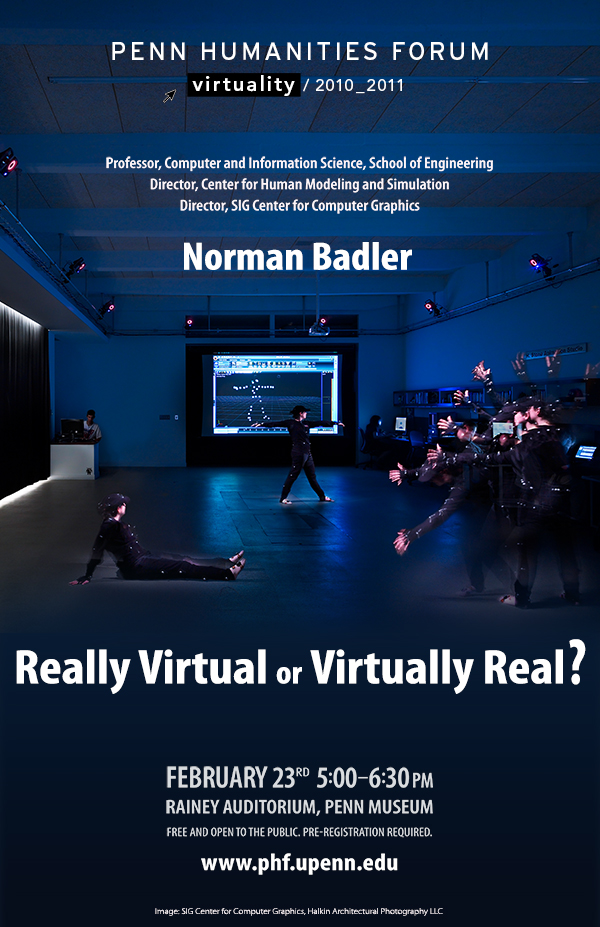In just fifty years, Computer Graphics has established itself as an indispensable part of both computers and visual entertainment media. Norman Badler, known for his work on the modeling and animation of virtual humans, looks at the current state of the art in animated virtual realities. How close are these animations to the realities they model, and in what ways do they strike us as still insufficiently “real”?
Norman I. Badler is a Professor of Computer and Information Science at the University of Pennsylvania, where he directs the Center for Human Modeling and Simulation. Among the Center's achievements are the human modeling software system Jack that was the basis for a spin-off company in 1996. He is also the Director of the Digital Media Design undergraduate degree program in Computer Science.
Active in computer graphics since 1968 with more than 200 technical papers, Badler conducts research on human figure modeling, manipulation, and animation control in real-time 3-D graphics. His current research interests include animation via simulation, embodied agent software, human-computer interfaces, and computational connections between language and action.
Badler received his BA in Creative Studies Mathematics from the University of California at Santa Barbara, and his MSc in Mathematics and PhD in Computer Science from the University of Toronto. He is Co-Editor of the Elsevier Journal Graphical Models.
Professor, Computer and Information Science, School of Engineering
Director, SIG Center for Computer Graphics
Director, Center for Human Modeling and Simulation
University of Pennsylvania



